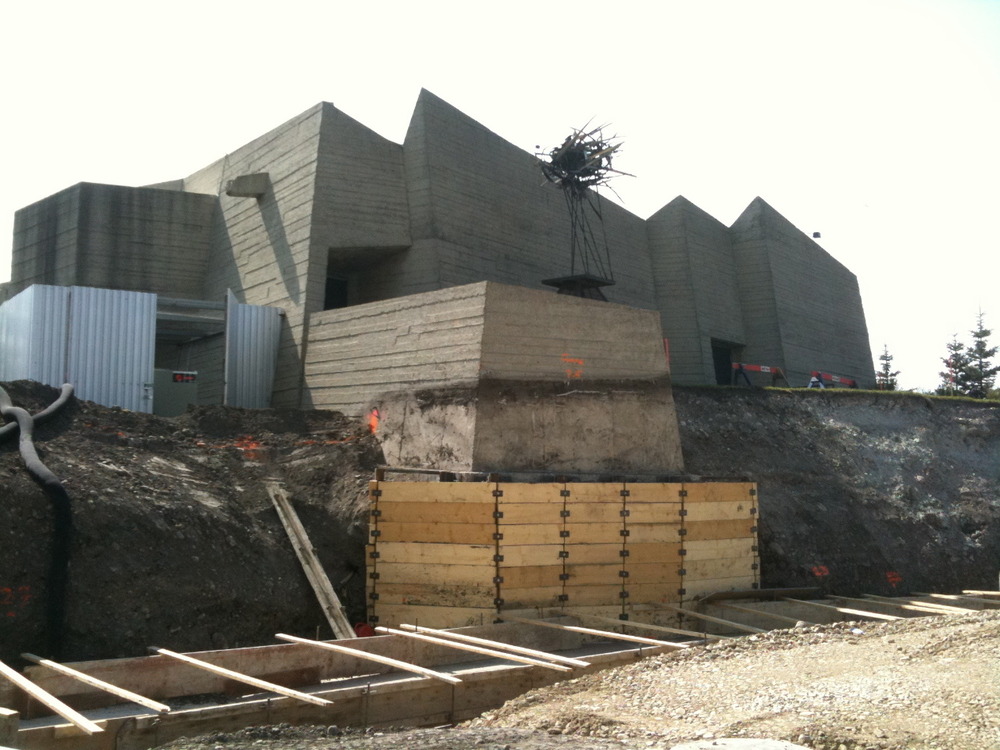on being brutal
 Long & MacMillan Architects. Calgary Centennial Planetarium, 1966. Here, shown in 2009, during the construction of a new LRT line that sliced through the site. Stephen Barnecut photograph.
Long & MacMillan Architects. Calgary Centennial Planetarium, 1966. Here, shown in 2009, during the construction of a new LRT line that sliced through the site. Stephen Barnecut photograph.
This past few weeks investigation into concrete started when I was asked why Calgary is over-represented by brutalist architecture. This came as a surprise, as it hadn't occurred to me that it was, and I wondered why this very particular term was all of a sudden in common parlance. As Adrian Forty mentioned, concrete can arouse great antipathy, and brutalism seems a fitting epithet.
We do have a lot of semi-civic buildings done in the early 1960s for education boards, the library, the YMCA, a police station, a remand centre (torn down last year) which sit like dark suspicious toads at the east side of downtown. Late 1950s / early 60s Calgary commercial towers, lovely office buildings of enamelled spandrel panels and opening clear glass windows, had none of the brooding qualities of the institutional architecture built at the same time.
What were they brooding over? Probably the threat of civil unrest that so dominated the United States at the time. The concrete Calgary Board of Education Building is a version of the concrete Boston City Hall, which itself was a version of Le Corbusier's concrete La Tourette, a monastery for retreat and isolation, not qualities useful for either a city hall or an education administration building. The line of influence from Paul Rudolph et al to Calgary came with the first oil boom.
Did we have civil unrest? no. Were we under threat from the USSR? only geographically, as at the time everyone thought a US/USSR war would be fought over northern Canada. Was the oil industry worried? clearly not. It built vulnerable, glassy, curtain wall towers, and still does.
Our best building from the era was Long & MacMillan's Centennial Planetarium: a great eruption of roughly-poured concrete that looked as if the geologic substrata had cracked open the grassy prairie. It was topped with a moon-like dome that did all the stars and space stuff. When space was no longer magical, it became the Telus Science Centre, which has since moved elsewhere. The building might now become a city art gallery. Somehow its architecture has become completely marooned, both formally, physically and conceptually.
